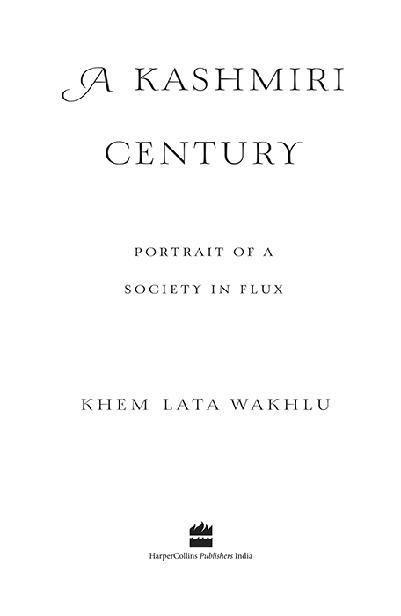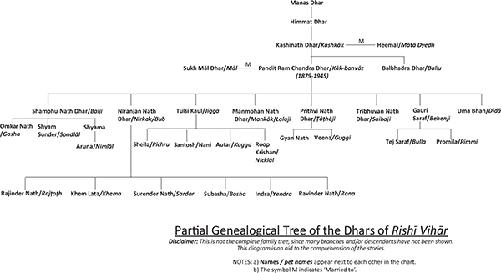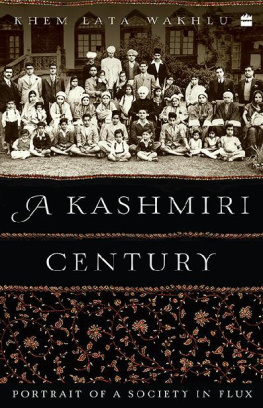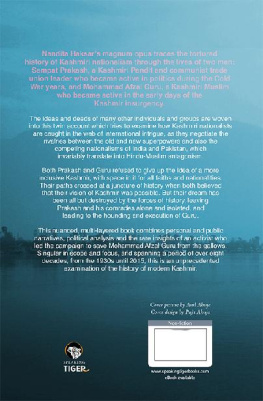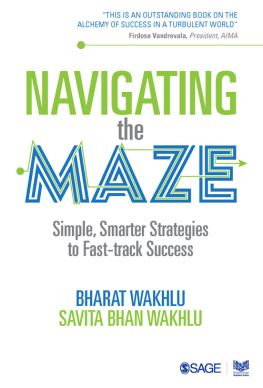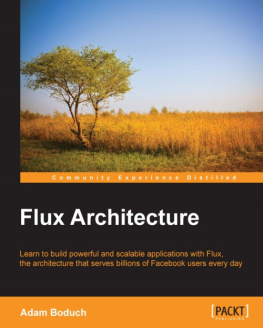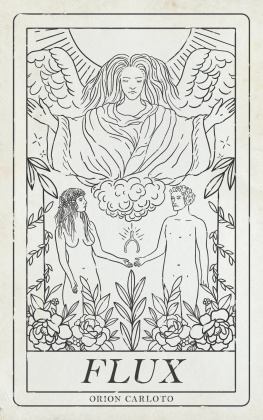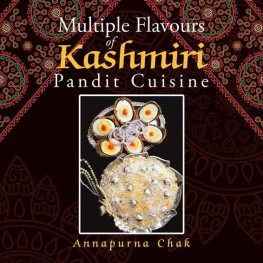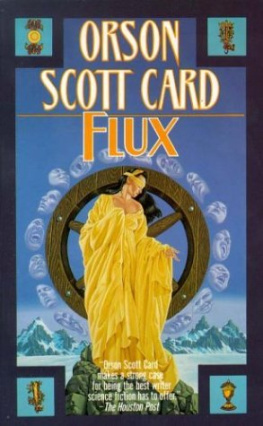Dedicated to the memory of all the great chroniclers of Kashmir-past and present-who have contributed to a better understanding of the ancient region,
and
to the millions of Kashmiris around the world, who in their quiet and effective ways are working for the well-being of all people and contributing to a more wholesome, productive, prosperous, harmonious, and joyous world
T he Kashmir region has been known throughout Indias long and chequered history for its natural beauty, its contribution to spiritual and philosophical thought, its lovely people, fertile soil, exuberant flora and fauna, and for being the abode of Devi Shradthe reigning deity of the region. Kashmir has, since time immemorial, been especially renowned for its magnificent contributions to the vast treasure trove of Indian literature as well as the first documented history of the region, the Rajatarangini , written by Kalhana Pandit (ca. twelfth century CE ) and later updated and presented as the Dvitiya Rajatarangini (second Rajatarangini ) by the historians Jonaraja (ca. thirteenth century CE ) and Srivara. Srivara was Jonarajas pupil.
Over the centuries, Kashmir has undergone cataclysmic social, cultural, and religious changes. From being the philosophical crown jewel of the Indian subcontinent in the Buddhist and Hindu periods, and renowned for its open societies and liberal and erudite thinking of its elite and the relaxed life of its people, including that of Kashmiri women, it was reduced to a pale shadow of its previous self after the fourteenth century CE . Kashmirs violent subjugation thereafter, and the systematic decimation of its populationincluding a conscious degradation of their enormous skills, like painting, sculpture, temple architecture and moreby subsequent rulers, who were bent upon converting its innocent and simple people into Muhammedans, has had an indelible impact on all Kashmiris.
In fact, the tumultuous and violent changes experienced over the past seven hundred years have left the people of Kashmir deeply scarred. All Kashmiris without exceptionthose who remained Hindus and those who adopted Islamhave been affected. This traumatic phase of our collective history has resulted in the people having a unique personality that reflects an odd and complex mixture of a variety of traits, all of which are aimed at ensuring survival through difficult and dark times.
Kashmiris, however, remain innocent at heart and, despite the tragic history of the past seven hundred years, display great enthusiasm for mirth and moments of enjoymentpossibly to stay rooted and happydespite the depressing conditions that they have had to endure for centuries. They are also the kind of people who love to hear and create wondrous stories, songs of love and pieces of satire and, lately, dark comedy. Besides, Kashmiri literature and drama as well as folklore are full of tales and songs of love, heartbreak, valour, and even hope.
This book endeavours to offer a rare glimpse into the lives of KashmirisHindus and Muslims alikeand the ways in which their lives revolved around the simple pleasures of life, even as they dealt with the sociological, cultural, and political changes of the last one hundred years.
The century preceding the 1990s was no less tumultuous than the many past centuries, but the last one hundred years saw the emergence of new geopolitical alignments based on religion and identity and these have had a considerable bearing on the lives and thinking of the people of Kashmir. I have tried to capture the zeitgeist of these past one hundred years through stories and insights that provide a subtle and uncommon peek into what Kashmir has experienced and endured. This I think is a one-of-a-kind effort because, whilst so much has been written about Kashmirits politics, the errors and omissions of governance, and the events that have led to its present statemost of these narratives give only fleeting glimpses of the simple, dignified, and mostly tough lives of its poor and innocent people. I doubt if any of the political treatises have ever delved deeply into the sociological and human sides of living in the Valley. Most writers have at best skimmed the surface of this aspect, if at all.
I was born and brought up in Kashmir, as part of the well-known Dhar family. The Dhars form a large group, albeit not all of them are related today since the branches diverged many centuries ago. The members of my familys offshoot have been residents of the Valley for hundreds of years, if not more. After the fourteenth century, as Kashmir got caught in endemic tussles between the forces endeavouring to create peace, and the greed, cruelty, and rapaciousness of invader-kings who wished to plunder whatever was worthwhile in the region, my forebears tried to play an active role in mitigating the suffering of the people. They were driven by a deep concern for the people of the Valley and an avid desire to bring an end to the miseries of the people. Not all of them succeeded, and many, including family members of my forebears, had to endure difficult times and long periods of separationincluding losing their loved onesfor going against the powerful noblemen and conquerors in Srinagar. In the eighteenth century CE when a number of them intervened to stop barbaric cruelty, many presumed that the Dhars only worked for their self-interest and started to say that, When the Dhars are doing well, Kashmir suffers ( Dhar bd, Kashr barbd, in Persian).
This was clearly used to discredit the role of Kashmiri Pandits generally, and the Dhars in particular, for engaging those in power to make life easy for all Kashmiris. Whether during the times of the Afghans or the Sikhs, and definitely after the Treaty of Amritsar was signed in 1846, Kashmiri Pandits did their utmost with whatever little influence they had to ensure a semblance of normalcy for people.
For me personally, the work and the stories of valour of my forebears and the difficult lives that the people of Kashmir lived inspired me to join politics. In fact, but for short stints, which I spent in other parts of India and overseas, I have lived in and contributed to Kashmir for much of my life. I know the way the people of Kashmir think. I know their fears, their aspirations their enduring desire for peace and harmony, and their fundamental innocence, that yearns for the restoration of a wholesome accord within, and without.
This book is a compilation of stories from the perspective of a witness immersed in the ethos of the land that has historically been called Reshi-Ver in Kashmiri. Reshi-Ver means the Garden of Mystics and Rishis. The Valley of Kashmir has been known by this name for aeons since it has been a place of great spiritual ferment and a region that has spawned and welcomed mystics, monks, mendicants, Sufis, and philosophers of all denominations and from different parts of the Orient, since time immemorial. The lives of the people revolved around hearing these great and noble saints, who preached love, oneness, and harmony as also living a life of balance. Most people would pursue their simple lives that revolved around agriculture, looking after their families, and often enduring great hardship and poverty. Because of this, most would also spend a lot of time following their spiritual practices, while simultaneously surviving against the normal hardships of life, which was hell without any of the amenities and the advances in medicine that we today take for granted.
